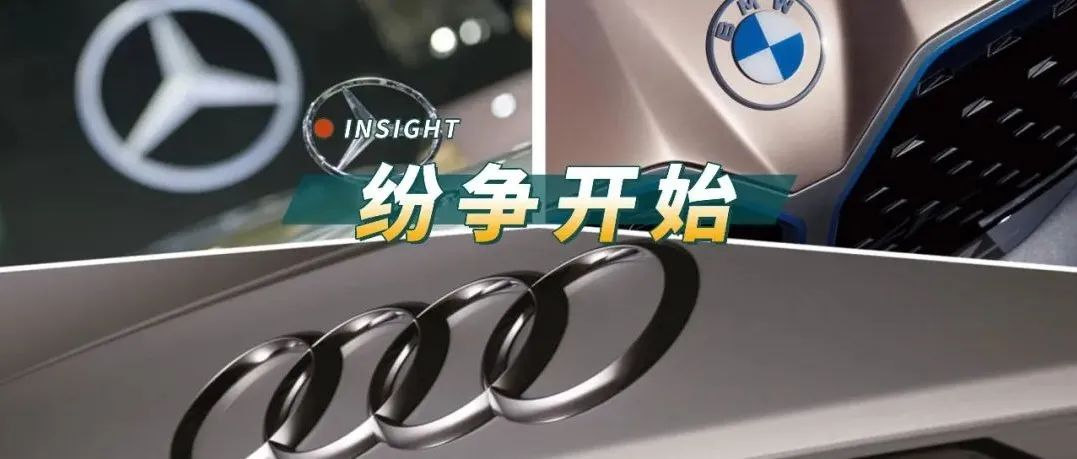Author: Xiaodong
Editor: Chris
Affected by the epidemic, the Beijing Auto Show was postponed, but the three old friends of BBA couldn’t hold back and successively released their new models.
Without further ado, let’s get into the topic. Let’s start with the “Automobile Inventor” Mercedes-Benz.
Flagship All-Electric SUV
On April 19 at 18:00, Mercedes-Benz officially released its new all-electric SUV, the EQS SUV, positioned as a large all-electric SUV. The price can refer to the price of EQS, ranging from 1.08 million to 1.52 million yuan. SUVs usually have higher prices than sedans, maybe starting from 1.2 million yuan?
Let’s start with the specifications:
- The length, width, and height are 5125 * 1959 * 1718 mm, and the wheelbase is 3210 mm, with optional 7 seats.
- It adopts the EVA platform, just like EQS.
- Currently, EQS SUV has three versions: 450+, 450 4MATIC, and 580 4MATIC.
- 450+ and 450 4MATIC use the same powertrain, with a maximum power of 265 kW and peak torque of 800 N·m.
- 580 4MATIC can be considered as a performance version with a maximum power of 400 kW and peak torque of 858 N·m.
- In terms of range, all three models use a 107.8 kWh battery, with a range of over 600 km under WLTP conditions.
- The maximum capacity of the trunk is 2100 L.
- Equipped with air suspension.
The overall exterior design still follows EQ’s design language, but EQS SUV looks more “stubborn” than EQS. With the same wheelbase of 3210 mm, EQS SUV is wider and taller than EQS, so the space inside the car and off-road capability are naturally stronger than EQS. In addition, with a maximum 10° rear-wheel steering, the turning diameter of this behemoth is only 11 meters.
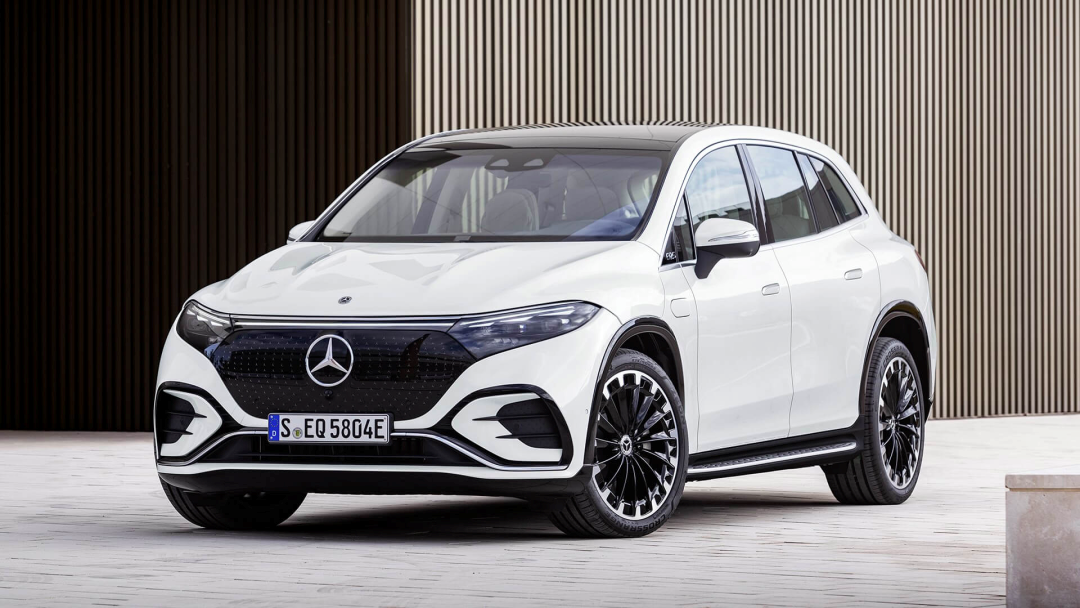
The interior is almost the same as EQS, with a 1.41-meter OLED screen running through the entire center console, consisting of a 12.3-inch instrument panel, a 17.7-inch central touchscreen, and a 12.3-inch co-driver’s screen.
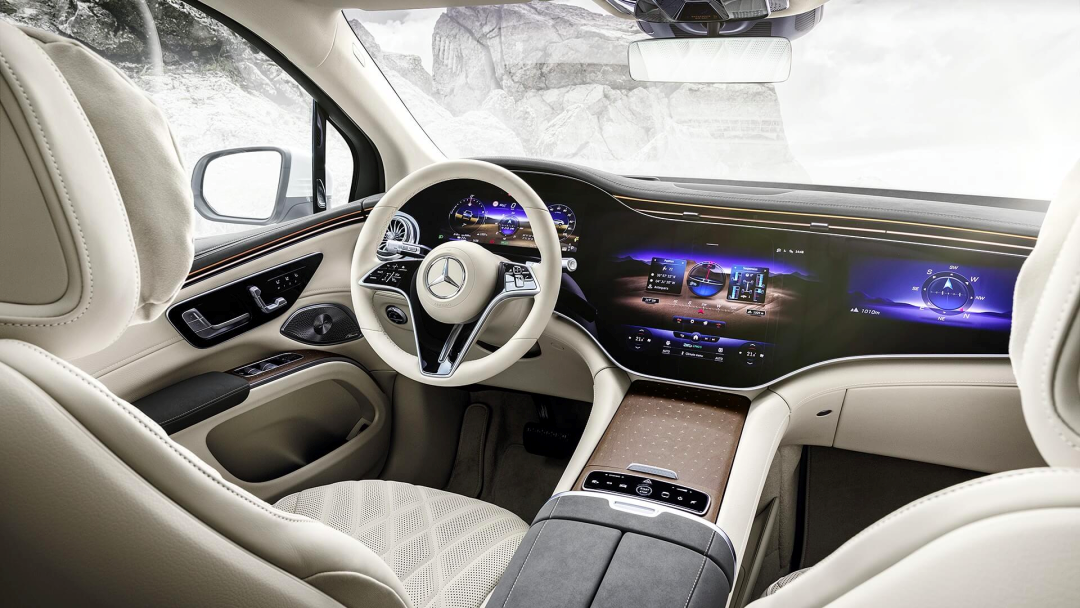 The car is equipped with an 8-core CPU and 24 GB of memory in its infotainment system, as well as an NVIDIA Xavier AI chip that can learn the driver’s habits and proactively adjust features such as seat heating and air conditioning. However, these features are no longer surprising in today’s world of advanced smart cockpits. Of course, as a million-dollar luxury car, it naturally includes things like the DGIGITAL LIGHT digital headlamp with projection support, a luxurious interior, ambient lighting even on the seats, and a HUD and Berliner sound system.
The car is equipped with an 8-core CPU and 24 GB of memory in its infotainment system, as well as an NVIDIA Xavier AI chip that can learn the driver’s habits and proactively adjust features such as seat heating and air conditioning. However, these features are no longer surprising in today’s world of advanced smart cockpits. Of course, as a million-dollar luxury car, it naturally includes things like the DGIGITAL LIGHT digital headlamp with projection support, a luxurious interior, ambient lighting even on the seats, and a HUD and Berliner sound system.
The biggest difference between EQS and EQS SUV is that the latter offers a “EASY-ENTRY convenient entry system” experience with a seven-seater layout, but based on official images, the third-row space is not particularly spacious. In addition, the “off-road mode” specifically designed for EQS SUV is also a significant distinction, with four-wheel drive, continuous adjustable damping ADS, and AIRMATIC air suspension hardware.
Lastly, let’s talk about intelligent driving. In late March 2022, Mercedes-Benz announced that it will take legal responsibility for the vehicle’s operation when the L3-level Drive Pilot autonomous driving system is equipped and the driver assistance system is activated. This is probably the first car company to take responsibility for accidents caused by autonomous driving, but the conditions are stringent.
Firstly, if the Drive Pilot prompts the driver to take over when it is activated, and an accident occurs, Mercedes-Benz will not be held responsible. Would this cause Mercedes’ algorithm to be biased towards being conservative? Multiple reminders during use lose their value. Secondly, there are speed and usage scenarios requirements, with a speed limit of 40 mph, or 64 km/h, which lowers the importance of autonomous driving at high speeds. Finally, there is a regional limitation, only supporting Germany for now, with North America support coming later this year, and domestic support appears to be a long time away.
EQS SUV still has a stylish appearance and interior, hardware configuration, and power system befitting a million-dollar luxury car. Meanwhile, Mercedes-Benz is improving its product line to capture large pure electric SUV market share. Similarly, we can glimpse into Mercedes-Benz’s EQE SUV product concept by examining this EQS SUV.
At the same time as the global debut of the EQS SUV, Audi has also launched the Urbansphere concept car globally, which is tailored for China.This is also the last concept car in the Audi Sphere series, designed specifically for rush hour traffic in megacities, and providing passengers with space to rest or work while on the road. Interestingly, this car was co-created with input from Chinese customers, thanks to Audi’s Beijing design team and German design center. Specifically, Audi’s Chinese interior design team was fully responsible for the interior of the car while also receiving feedback from target customers.
It’s easy to see that these requirements are fully integrated into the Urbansphere. With its huge size, the Urbansphere measures 5510 x 2010 x 1780 mm, and boasts an exaggerated wheelbase of 3400 mm, truly embodying Chinese characteristics. According to official pictures from Audi, the rear space is so large that you can even see tea sets in the center of the rear seat under the lift table!
Of course, the focal point is the interior of the car. The entire Sphere series, which boasts L4 level autonomous driving capability, features a hidden steering wheel, throttle/brake pedals, and dashboard. The Urbansphere’s interior color scheme and ample wooden decor, together with ambient lighting, create a warm and welcoming atmosphere for users.
Upon welcoming passengers, the four seats in the car rotate outward. It’s also special that a red light guides passengers to get on the car, making them feel like they are walking on a red carpet every day 🙂
In addition, the front seats can rotate 180°, allowing passengers to face each other and converse. In relaxation or entertainment mode, the seat back can recline up to 60°, and each headrest is equipped with a speaker. The rear seats also come with a transparent OLED screen that supports split screens, perfect for video conferencing or watching movies, and when unused, the screen’s transparency ensures a clear view of the front.As a concept car, how could it be without high-tech features? Audi has installed an innovative control device, MMI touch control, on the car door. Through this control button, various functional menus can be selected and corresponding interfaces can be clicked to achieve the purpose of functional key. In addition, it also has eye tracking and gesture control functions, making it easy to control the system when the seat is tilted. Perhaps a better voice assistant can bring more convenience? Of course, I believe that many people, like me, feel silly talking in the car.
Let’s talk about something non-conceptual. Urbansphere is still built on the PPE platform, using an 800V high-voltage platform with a maximum charging power of 270 kW. It adopts a dual-motor power mode, with a maximum power of 295 kW and a maximum torque of 690 N·m. Equipped with Audi’s electric Quattro all-wheel drive system and adaptive air suspension, the WLTP range is expected to be 750 km.
The sphere series can basically be regarded as the product matrix of Audi’s next generation models. Even in terms of platform, power, and range, there will be no significant deviation. The appearance of Urbansphere also shows that Audi will pay more attention to the interior space design in the design of future SUV/MPV to better meet the needs of users in the car. The most important ecosystem, Audi is also actively following up on it. However, this makes me a little worried. Compared with the new forces of local incubation, Audi, as a global car company, will naturally have some shortcomings in considering various aspects.
Fortunately, Audi is co-creating with Chinese users, which will enable Audi to consider the user experience of Chinese users more in the development of the next generation of car models.
Home in China
One day later, BMW Group released its flagship sedan- the all-new BMW 7 series. Unlike before, this time BMW’s all-new 7 series is electrified. BMW i7 was officially released, and the BMW Group upgraded their Chinese strategy to “Home in China”. Besides the power system, the fuel and pure electric versions of the BMW 7 series are almost the same. Let’s take a look together.
In terms of exterior design, BMW’s increasingly large nostril family design language has been retained. The front of the car uses a newly designed split-type headlight. The LED light group above integrates daytime running lights, turn signals, and side lights, while the lower headlight is responsible for high and low beams with high recognition.
Let’s take a look at the tail light design of the all-new BMW 7 Series based on comments on Weibo.
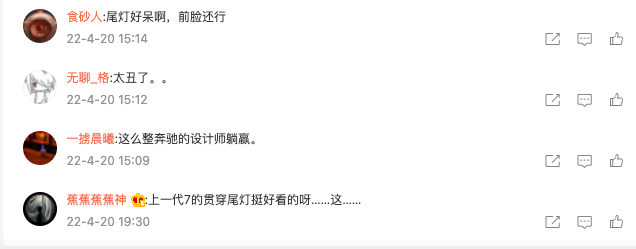
As for the interior, it adopts the same design language as the iX, featuring an integrated curved surface display composed of a 12.3-inch digital instrument cluster and a 14.9-inch center display, slightly tilted towards the driver. The infotainment system also shares the same platform with the iX, equipped with the iDrive 8.0 system and powered by the Qualcomm Snapdragon 8155 in-car chip.
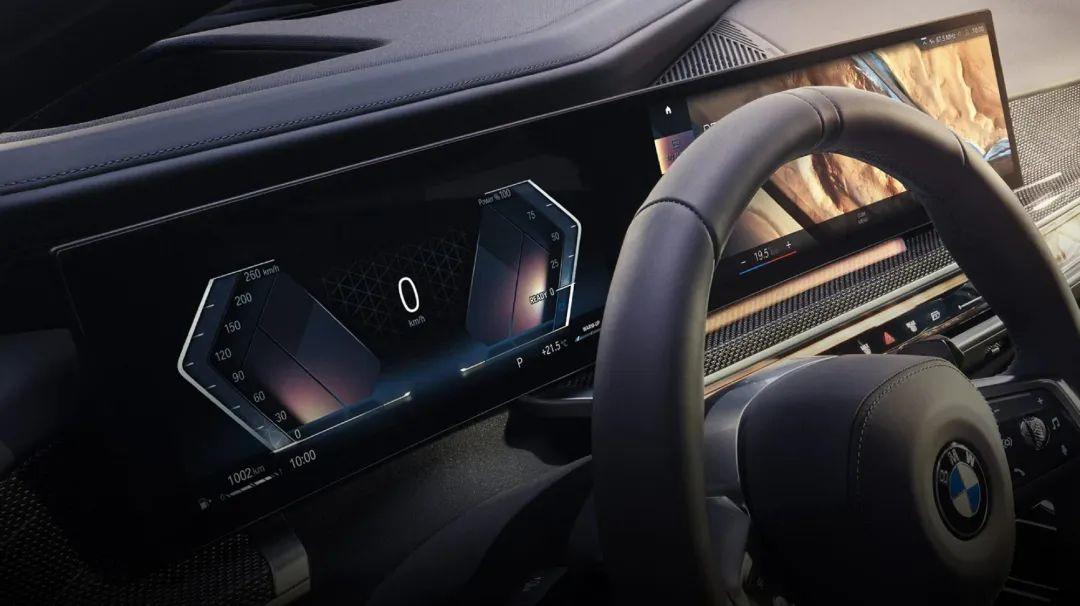
It is also equipped with BMW’s “Luminous Halo” interactive light band, which is not just an ambient light, but can also convey various information. For example, when there is a car approaching from behind, it can use a red light to transmit a warning signal of danger, and it can also change colors under different themes.
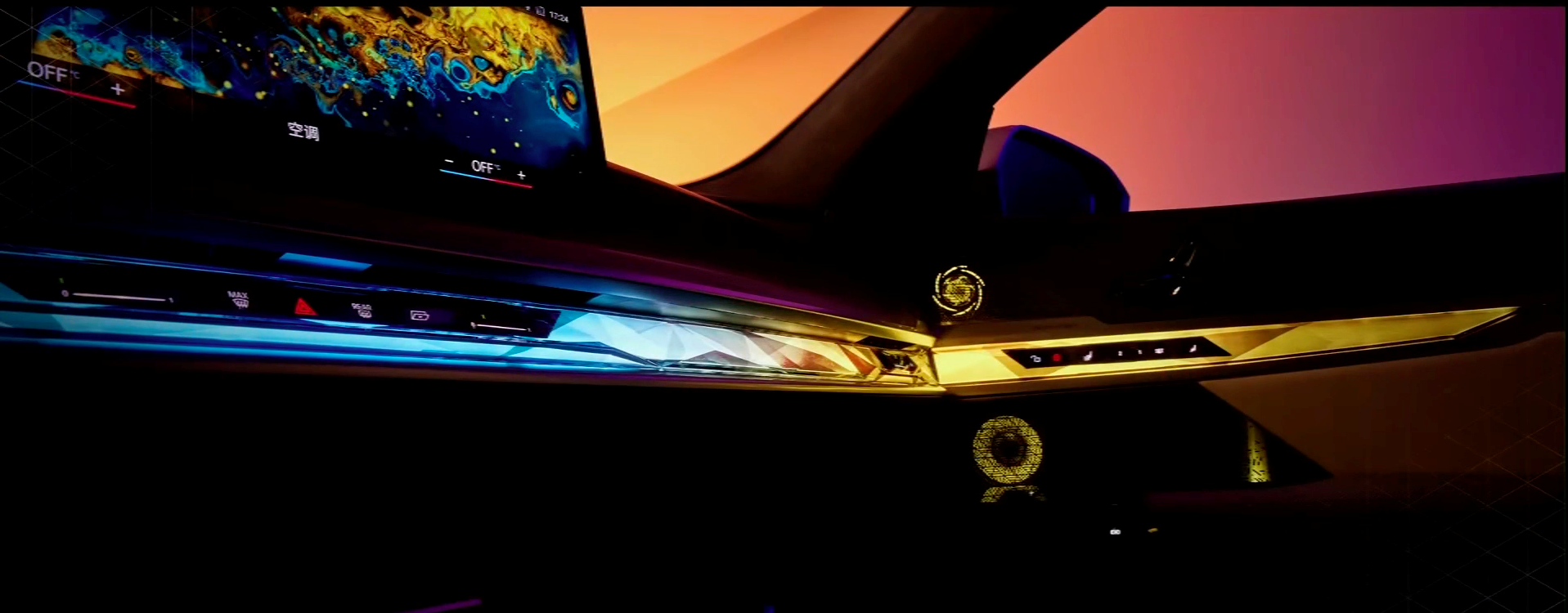
The biggest surprise is in the back seat. BMW has widened the back seat and supports a maximum recline angle of 42.5°, as well as a integrated leg rest. The back seat provides ultimate comfort and luxury, and in addition, there is a retractable 31.3-inch 8K display screen (which can play iQiyi, etc.). In theater mode, with the sunshade pulled up, the ambient light adjusted, and the 40 Bowers & Wilkins speakers with a maximum power of 1965 kW, it brings you an ultimate cinema experience.

At the same time, there is a 5.5-inch touchscreen on the rear armrest, which makes it more convenient for backseat passengers to operate, proving that the new BMW 7 Series has put a lot of effort into the backseat riding experience.
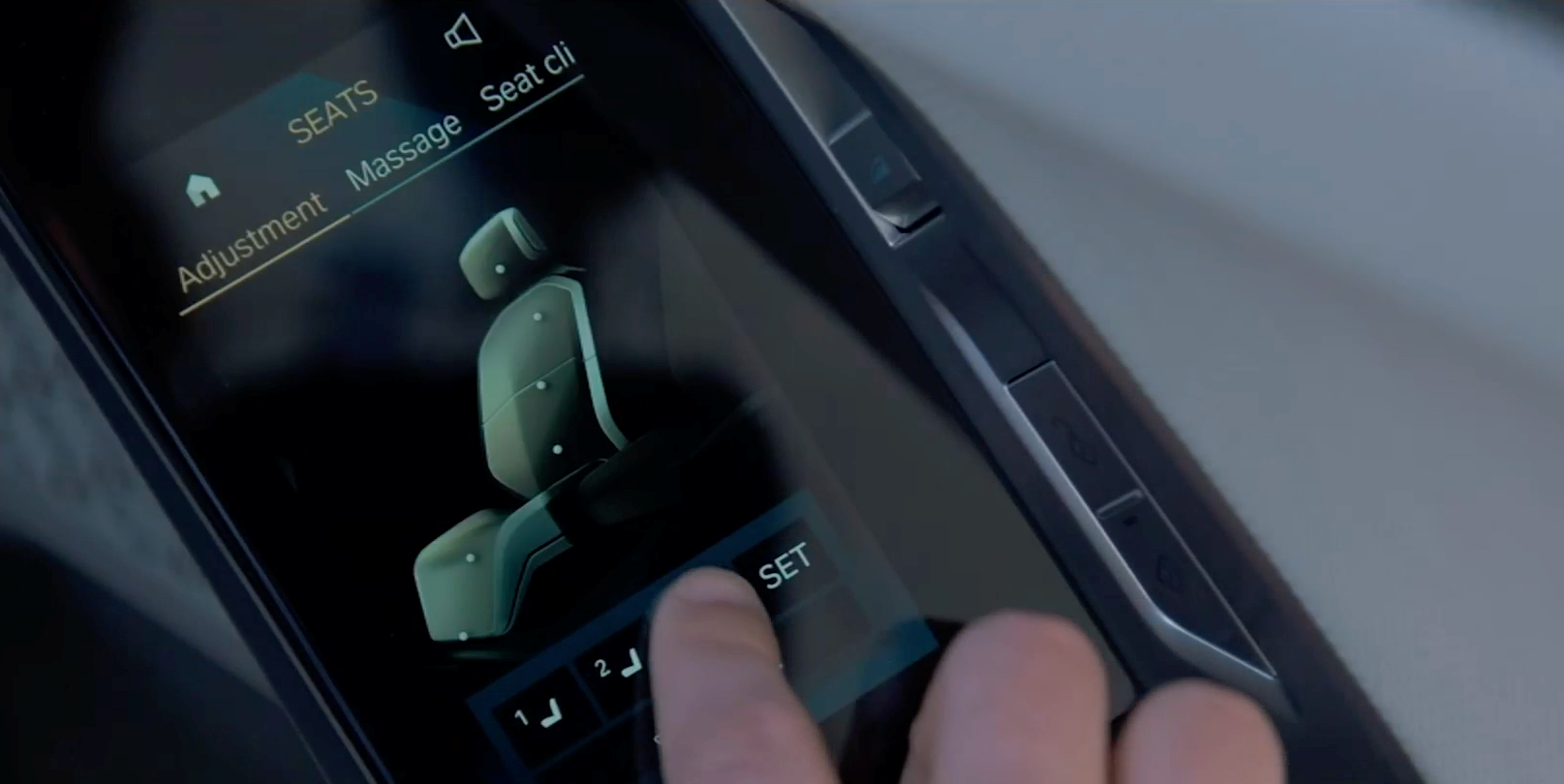 In terms of power, the i7 adopts a dual-motor four-wheel drive system, with a maximum power of 400 kW and a maximum torque of 544 Nm. BMW officials stated that the i7 xDrive60 accelerates from 0 to 100 km/h in 4.7 seconds. In terms of range, the i7 xDrive is equipped with a 101.7 kWh battery, with a range of 590-625 km (WLTP). However, the large battery also increases the i7 xDrive60’s curb weight to 2640 kg.
In terms of power, the i7 adopts a dual-motor four-wheel drive system, with a maximum power of 400 kW and a maximum torque of 544 Nm. BMW officials stated that the i7 xDrive60 accelerates from 0 to 100 km/h in 4.7 seconds. In terms of range, the i7 xDrive is equipped with a 101.7 kWh battery, with a range of 590-625 km (WLTP). However, the large battery also increases the i7 xDrive60’s curb weight to 2640 kg.
In terms of suspension, it features a front double-wishbone and rear five-link suspension, combined with air suspension and electronic damping. For a century-old car manufacturer like BMW, one can rest assured about the chassis tuning and NVH control, and so on.
In terms of intelligence, the new BMW 7 Series is equipped with Level 2 assisted driving functions, and technically has the possibility of Level 3 autonomous driving.
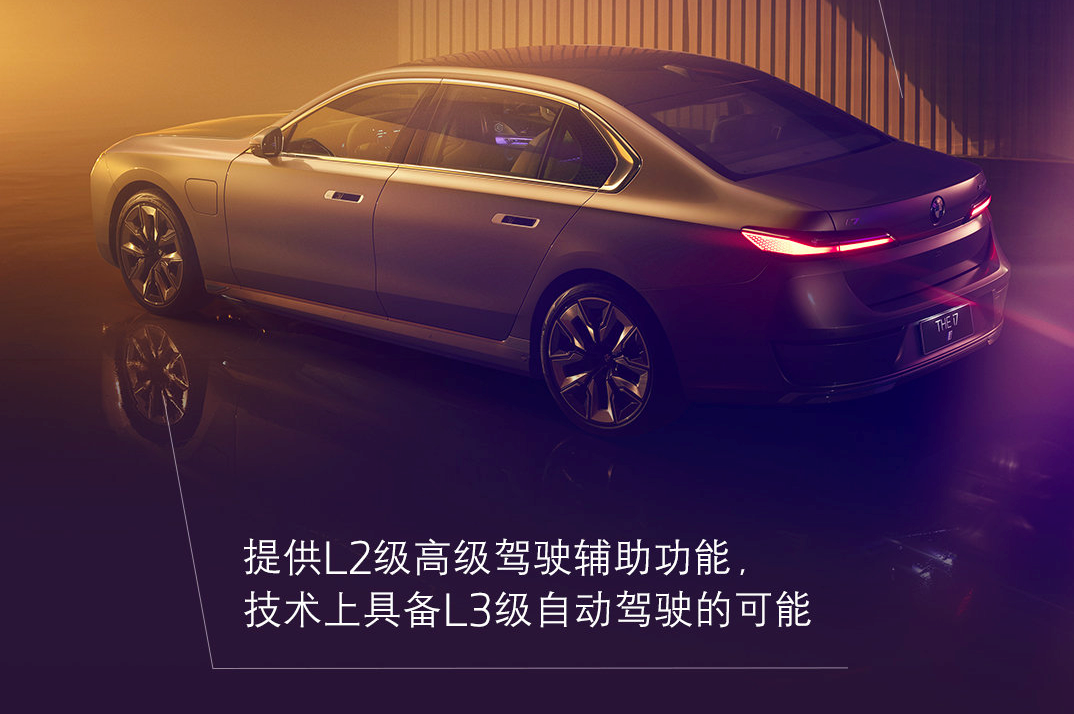
As the flagship pure electric sedan of BMW, if there were any shortcomings, perhaps it is just its high cost. Although the price has not been announced yet, judging from the selling price of the iX, the i7 is also expected to be priced close to a million yuan.
Conclusion
Most flagship models of various brands interpret the design philosophy of the brand, and in the era of electrification, everyone attaches great importance to the digital experience and emphasizes the construction of the car’s third space. As the largest producer and seller of new energy vehicles in the world, China undoubtedly makes various brands work tirelessly. This time, Audi and BMW directly brought China to the press conference, which shows the importance of the Chinese market.
Next, it is an era of fierce collision between traditional brands and new forces. It remains to be seen whether new forces can catch up with traditional car companies faster, or traditional brands can embrace the new era faster. The answer is worth looking forward to.
This article is a translation by ChatGPT of a Chinese report from 42HOW. If you have any questions about it, please email bd@42how.com.
